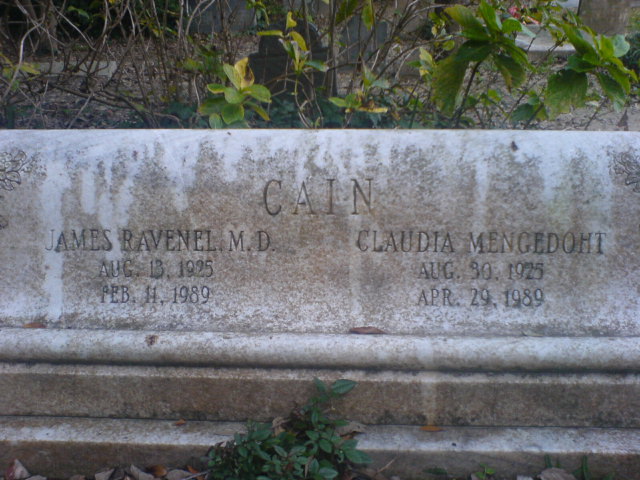Basquiat Interview
Jean Michel Basquiat 1960-1988.


Jean Michel Basquiat 1960-1988.
Posted by
Varo Borja
at
2:43 PM
0
comments
![]()
Labels: Art History
 The Irish Contribution
The Irish Contribution
by
Varo Borja
The Golden Age of Ireland took place roughly from 600 to 800 A.D., and is a shining accomplishment for a people who before and after this period were and are somewhat relegated to obscurity. The Golden Age was a time of extreme courage, devout learning, and disciplined scholarship by the Irish people, but it had its foundations in a much earlier time. In this essay I will attempt to briefly discuss the period leading up to the Golden Age, the Golden Age itself and why it has been given that name, some of the accomplishments of the Golden Age, and why it ended.
First, I will attempt to shine a little light on the period preceding the Golden Age of Ireland. Roman Britain, in the early 5th century, was a deteriorating province on the very edges of a sick and corrupted Empire. Internal strife, external pressure (by the barbarians surrounding the Empire on all sides), and an ever weakening military structure had almost completely crippled the Roman Empire by the year 410 A.D, when Rome itself was sacked by the Visigoths. In that year, the Roman Emperor Honorius sent word to the province of Britain that it would have to fend for itself. The Roman legions, who had protected the Romano Briton populace from the inroads of the Celts (who were based in Ireland), and the Picts, (who were indigenous to Scotland), pulled out of Britain (modern day England) and left the helpless people to make out as best they could. The barbarian hordes came sporadically at first, but then in much greater numbers until the old Roman civilization of Britain was crumbled into the dust. During this tumultuous time, a young Romano Briton boy named Patrick was captured by a Celtic slave trader named Niall of the Nine Hostages. Patrick (c.389-461 A.D.) was a lad of sixteen, and when he arrived in Ireland he was sold to a shepherd for labor in that field. During Patrick’s enslavement, he converted to Christianity. There are legends that say he had a life-changing dream in which he saw himself as the Apostle to the Irish. He escaped back to the mainland of Britain, but he didn’t forget his experiences during his captivity. Patrick went into the priesthood in Gaul (France), where he studied and was ordained in 417 A.D. He was commissioned to the church at Auxerre, and spent 15 years there. His first bid to be a missionary to the Irish was declined because of an obscure sin in his childhood. But when Palladius (first bishop to the Irish, ordained 431 by Pope Celestius 1) died suddenly, Patrick’s bid was accepted and he was ordained Bishop to the Irish in 432 A.D. and he started on his almost lifelong dream of evangelizing the Irish.
On his arrival in Ireland, Patrick set to work converting the people of Northern Ireland. He had great success with the commoners, who accepted his message of everlasting life beyond the grave with enthusiasm (not surprisingly; their lives were characterized by extreme hardship and toil in the present world), but he had more difficulty with the nobles. The Ard-Ri, or High King of the Irish kept much of his power by also anointing himself head of the pagan religion indigenous to that region: Druidism. Druidism was a type of animistic faith based on nature and the spirits of animals and plants (especially trees), and had been practiced in Ireland for centuries. Compared to some other pagan faiths it was somewhat benign, but it did involve the occasional sacrifice of infants to goddesses such as Rhianon, who was the bringer of fertility. The Brehons (or law givers) were also opposed to the faith of Patrick, because the Christian religion would institute new laws that were interpreted by priests instead of themselves. The nobility of Ireland was not uneducated (at that time) however. They had a long tradition of oral teaching. This was another reason the higher classes of Celts were opposed to Patrick’s brand of faith. Christianity brought the written word; a thing foreign and considered to be evil by the Druidic priests.
However, Patrick did plant the seeds of faith in good soil, and only about 35 years after his death, much of the island was Christian, including almost all the nobility. Patrick was a staunch supporter of the doctrines and practices of the Church of Rome, and the new faith of the Irish was almost completely Orthodox in nature. The only variance was the Irish people’s reluctance to give up the old Brehon law of easy divorce and remarriage.
Perhaps one of Patrick’s greatest contributions to the Western World was his development of the monastery schools in Ireland where learning flourished and the Hiberno-Saxon style of illuminated manuscripts developed. The Irish monks were very talented at copying such works as the Bible and other texts from the ancient world into elaborate “codices” or books. During this period much of the learning of the Western World fell into decay and the people of the European continent regressed into barbarism. Not so with the Irish though, who through a combination of fortunate geography and devout Christianity were able to “save” much of the literature of the ancient world. Also, the Irish were devoted missionaries. They spread the faith of Patrick first to the mainland of Britain, and then on to the continent of Europe and as far as Germany and modern day Poland. The Irish monasteries focused on a standard curriculum that consisted of courses in Greek and Latin, as well as the Seven Liberal Arts, which were divided up into the trivium and the quadrivium. The trivium consisted of grammar (or the art of writing), rhetoric (the art of speaking), and dialectic (the art of reasoned argument). The quadrivium consisted of arithmetic, astronomy, geometry, and music. It is interesting to note that these are the same subjects that were studied in ancient Greece during the Classical and Hellenistic periods at such places as Plato’s Academy and other schools throughout the ancient world.
By the 6th century, Irish monastery-schools were considered the most elite sources for classical education in all the Western World. St. Columba (c.521-597 A.D.), or “The Dove of the Church”, founded a monastery on the obscure island of Iona, off the coast of Caledonia (Scotland) and spent the last years of his life converting the Scots to Christianity and educating them. A very intellectually prosperous school was founded there, and this is where the famed “Book of Kells” was created in the late 8th and early 9th centuries A.D. (see photo in the header). St. Columbanus (543 A.D. to 615 A.D.) was another Irish monk who founded dozens of schools on the mainland of Europe, a couple of which gained great renown for their scholarship and mission work. By the beginning of the 9th century, Irish monk/scholars were considered to be the cream of the crop of the Western World. Johann Scotus, or “Eriugena” was the foremost of these. He traveled to France in 845 A.D., and soon became the leading light at the courts of Charlemagne and Charles the Bald, Charlemagne’s grandson.
Sadly, the Golden Age of Ireland was drawing to a close around the end of the 9th century A.D. with the beginning of the Viking (Scandinavian) invasions into Ireland and the resurgence of the power of the Roman church. Also, with the death of Charlemagne, the great Renaissance enacted by that illustrious ruler began to deteriorate, leaving learning in the lurch and ushering in more violence. The civil war fought over the empire left by Charlemagne drained the resources of the continent and impeded the progress of the more peaceful arts of literature and classical studies in favor of those of the art of war. However, according to most scholars, the impact of the Golden Age of Ireland was felt for many centuries to come.
In conclusion, the story of the Golden Age of Ireland had somewhat a hint of irony about it. The Irish, who for centuries before the mission of Patrick, had been living in the darkness of superstition and without the written word, and after the Golden Age, in our own time, have been racked with terrorism by such groups as the Irish Republican Army and various Protestant terrorist groups, have never been a people of rest. They have always put their collective hearts into everything they have done; be it violence, religion, or scholarship. It is highly ironic that a people characterized by the typical “Irish drunkard” actually saved Western Civilization by their temperance, devoted scholarship, and zeal for the Christian faith. Another bit of irony exists in the base that the Patriarch of the Irish people, Patrick, used for his conversion of the island to Roman Catholicism. That base was Armagh, a town now known for its largely Protestant population. An old saying exists about the Irish people, and I’ll repeat it now: God gave the Irish whiskey to keep them from taking over the world. In the light of the Golden Age of Ireland, perhaps this saying is true, but to quote Thomas Cahill, author of “How the Irish Saved Civilization”, “If the future is to be changed, it will be the saints that do it."
Posted by
Varo Borja
at
1:57 PM
1 comments
![]()
Labels: Art History
Sister Wendy ist rad.
Posted by
Varo Borja
at
12:42 AM
0
comments
![]()
Labels: Art History

Wanna get the scoop on what's really going on Iraq? Check out Fight to Survive. This most excellent blog has been put together by some of the real eye witnesses to the "war on terror". These guys lay it all out there in black and white, and present a striking contrast to the lard assed, boozed up, flag waving "Country" singers toting big fat paychecks and little or no dignity or credibility. This blog is first rate in content as well as composition. I'm honored to be able to list it on my page. You'll find it, once again, under News on the right.
Posted by
Varo Borja
at
12:29 AM
0
comments
![]()
Labels: Politics

I've read several posts from this man's blog, and he makes a lot of sense. Shame that war can make a man so cynical, but hey, I'm cynical and I've only had a few shots fired in anger in my direction. Mainly from jilted trailer brides with bottles of Jack in their non-gun wielding hands. Check him out. If he doesn't change the way you see the world, he'll at least avert your gaze for a moment from the newest big bosomed blonde trying to sell you a fluglebinder. Edit: I couldn't get the link to work, so I went ahead and put his blog under news. You'll find it to the right in the links section. peace.
Posted by
Varo Borja
at
12:07 AM
0
comments
![]()
Labels: Politics
